1. Georgia Guidestones (Elbert County, Georgia)
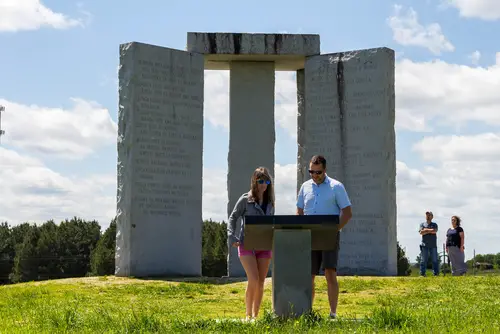
These towering slabs of granite appeared mysteriously in 1980, inscribed with cryptic “commandments” for humanity. They called for population control, world unity, and a new age of reason — but no one knew who funded them. That secrecy became their defining feature, sparking endless conspiracy theories. The monument claimed to guide humanity, yet its real message was that power can hide behind mystery.
Even as people flocked to see them, the Guidestones’ origin story remained deliberately concealed. That secrecy invited speculation and misdirection, turning the monument into a kind of puzzle rather than a proclamation. Its builders wanted control, not clarity. Ironically, a monument meant to preserve wisdom became one that thrived on confusion.
2. Jefferson Memorial (Washington, D.C.)
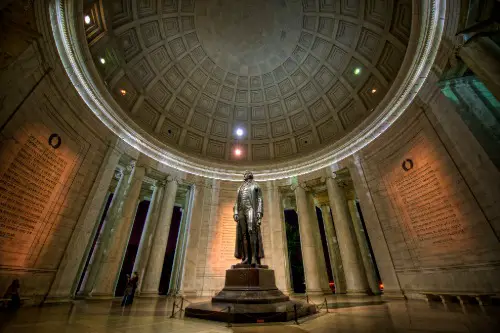
The Jefferson Memorial might look like a timeless tribute to a Founding Father, but it was really built to project a selective version of his legacy. During the 1930s and 40s, the U.S. was eager for symbols of unity, so Jefferson’s complex history got simplified into neat, inspirational quotes. The memorial omits the reality of his life as a slaveholder, choosing instead to celebrate his ideals without context. In doing so, it turned a flawed man into a marble myth — one that hides the contradictions of American freedom.
The building itself reinforces that myth through design. Its serene dome and open-air layout create an almost sacred feeling, encouraging quiet admiration rather than critical thought. Visitors rarely stop to consider what’s missing from the story told there. The monument celebrates liberty while quietly ignoring the people Jefferson denied it to.
3. Confederate Monument in Arlington National Cemetery (Arlington, VA)

This 1914 monument sits on what used to be Robert E. Lee’s property, which already gives it symbolic weight. Officially, it honors Confederate soldiers, but the figures carved into it tell a much different story. Women are shown blessing the “Lost Cause,” and slaves are depicted as loyal — a deliberate distortion of history. The entire sculpture was part of a campaign to soften the image of the Confederacy.
Instead of mourning a war’s losses, the monument reframed a rebellion for slavery as something noble and honorable. It was meant to heal old wounds, but only for white Americans. Black soldiers who fought for the Union are conspicuously absent from that landscape. It’s less a memorial than a message about which version of history was allowed to stand.
4. DeKalb County Confederate Monument (Decatur, Georgia)
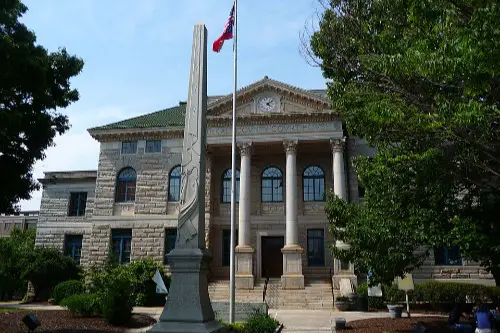
This granite obelisk went up in 1908, more than 40 years after the Civil War. Its inscription praises a “covenant-keeping race,” an unmistakable nod to white supremacy. It wasn’t built to remember the dead but to reinforce who held power in the Jim Crow South. In effect, it celebrated segregation while pretending to honor sacrifice.
The monument’s timing was everything. As the South tightened its racial laws, the statue became a statement of dominance over public memory. By calling the Confederacy’s cause “truth,” it helped obscure the real truth — that the war had been fought to preserve slavery. It stood as both a warning and a whitewashed history lesson.
5. Augusta Confederate Monument (Augusta, Georgia)
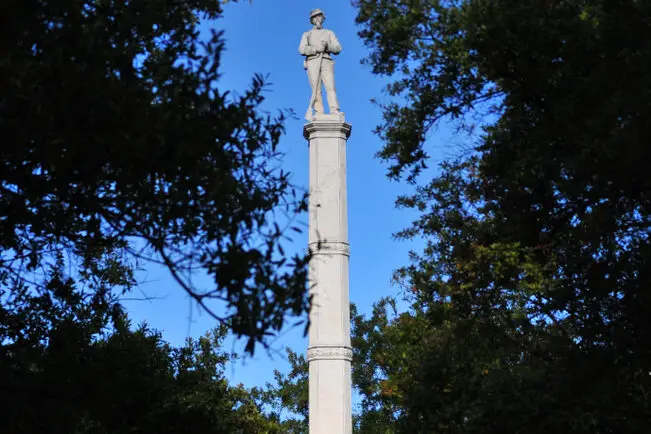
When this monument was unveiled in 1878, it wasn’t about remembrance — it was about rewriting the story of defeat. Its inscriptions glorify the “principles of the South,” suggesting the Confederacy fought for noble ideals rather than slavery. That’s not history; it’s spin. The monument effectively transformed loss into legend.
Placed in the heart of downtown, it asserted that the Confederate cause still deserved honor. Its towering figures looked down on passersby, literally elevating those who fought to preserve slavery. To the white residents who built it, that message was comforting. To everyone else, it was a reminder that truth had been buried under stone.
6. Albert Pike Memorial (Washington, D.C.)
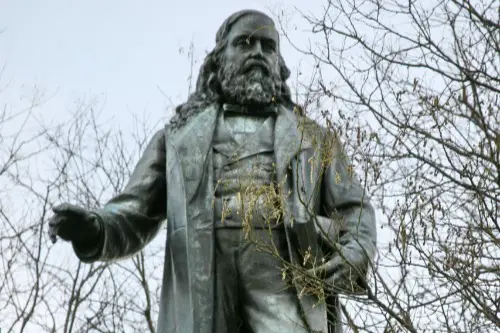
Albert Pike’s statue in D.C. portrayed him as a philosopher and Masonic scholar. What it didn’t highlight was his role as a Confederate general. By focusing on his intellect and civic contributions, the monument downplayed the darker parts of his story. It turned a complicated man into a harmless symbol of wisdom.
The memorial’s selective storytelling was no accident. It allowed admirers to ignore Pike’s alignment with the Confederacy and his controversial racial views. In the capital city, that omission spoke volumes. It wasn’t about celebrating history — it was about erasing the uncomfortable parts of it.
7. Memorial to the Women of the Confederacy (Richmond, Virginia)
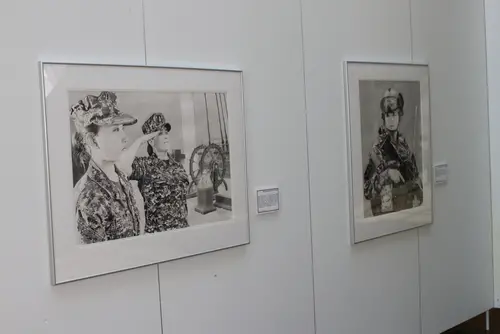
This structure was built in the 1950s, nearly a century after the Civil War, when the United Daughters of the Confederacy were rewriting Southern memory. Ostensibly, it honored the women who “sacrificed” during the war. But the real goal was to frame the Confederacy’s cause as virtuous, familial, and feminine — far from the brutal reality of slavery. It was propaganda wrapped in sentimentality.
The building became a headquarters for producing textbooks and lessons that downplayed slavery’s central role in the conflict. Its architecture suggested reverence, but its purpose was manipulation. It helped recast the South’s past as genteel and noble. In short, it was a monument built to make forgetting look graceful.
8. Confederate Soldier Monument in Princeton (Princeton, Kentucky)
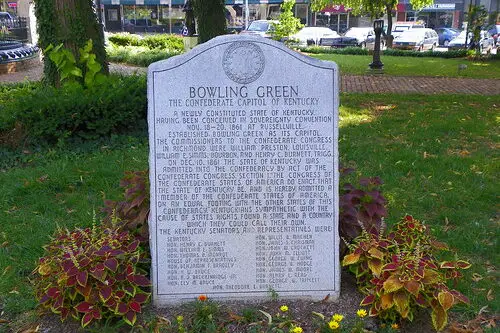
At first glance, this 1912 statue of a lone Confederate soldier looks harmless. But it was erected not during the war’s aftermath — during segregation’s rise. That timing made it more than a memorial; it was a declaration. Facing north, the soldier’s stance was symbolic defiance against the Union and progress.
The monument’s design reinforced the idea of Southern resilience and righteousness. It transformed rebellion into heroism, encouraging pride in a cause that should have been cause for shame. Its message wasn’t “remember the fallen,” but “remember who’s in charge.” In that sense, it told a lie in stone.
9. Confederate Monument in Paducah (Paducah, Kentucky)
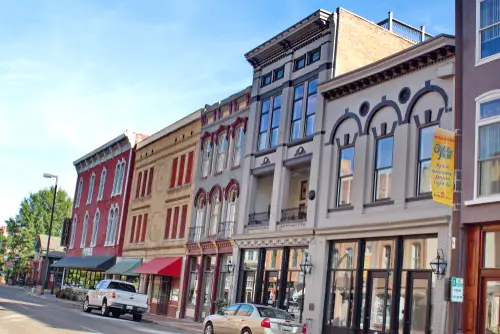
Built in 1907, this tall granite obelisk claims to honor Confederate soldiers who died in battle. Yet it was part of a broader push to reshape public spaces with Confederate symbols decades after the war. The monument doesn’t mourn so much as mythologize. It frames the Confederacy’s loss as a noble stand rather than a failed fight to preserve slavery.
Placed in a public cemetery, it was both a local landmark and a political statement. Its presence legitimized a false narrative about the war’s purpose. By mixing grief with glorification, it blurred the moral lines of history. It invited people to honor something that should never have been celebrated.
10. Confederate Memorial Hall (Vanderbilt University, Tennessee)
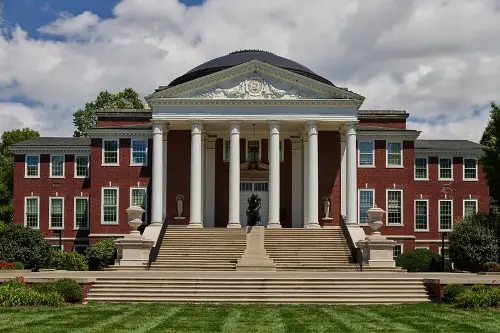
When this building went up in 1935, it was funded by the United Daughters of the Confederacy as housing for descendants of Confederate veterans. On paper, it sounded like an act of generosity. But in reality, it was a monument disguised as a dormitory — one meant to normalize Confederate pride in higher education. Its very existence helped weave the Lost Cause into the fabric of Southern academia.
The hall’s name and purpose reinforced the idea that the Confederacy was a legitimate and honorable heritage. Students walked by it every day, absorbing that message without question. It turned history into identity and exclusion into tradition. That’s how memory gets rewritten quietly, one brick at a time.
11. Confederate Monument (University of Mississippi, Oxford)
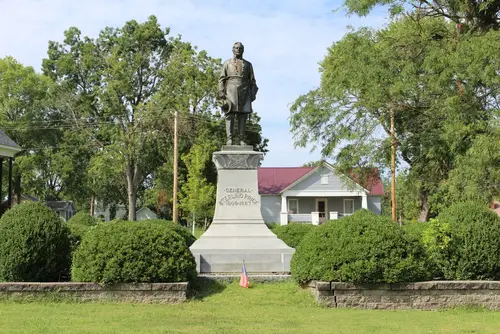
Erected in 1906, this statue stood at the heart of campus, honoring students who fought for the Confederacy. But it wasn’t just commemorative — it was a statement about who belonged at the university. During Jim Crow, it reminded Black students of their place in a segregated order. The statue’s silence spoke louder than any speech could.
The monument turned a site of education into a shrine to white supremacy. By presenting Confederate soldiers as martyrs, it distorted the war’s meaning. It blurred the line between history and heritage, between remembrance and erasure. For decades, it hid oppression behind marble and tradition.
12. Jefferson Davis Monument (Richmond, Virginia)
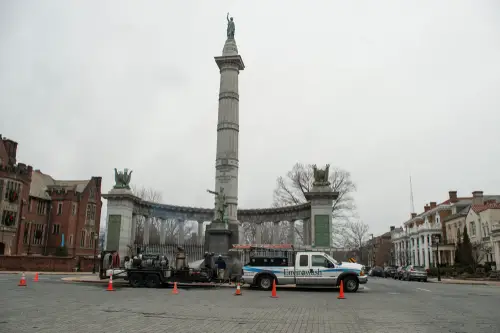
Built in 1907, this grand statue of Jefferson Davis portrayed the Confederate president as a dignified statesman. It made his cause look like a matter of principle, not one of preserving slavery. The monument’s design — with Davis standing tall beneath neoclassical arches — was meant to elevate him to near-heroic status. It rewrote rebellion as honor.
For over a century, it stood as a centerpiece of Richmond’s Monument Avenue, projecting pride rather than reflection. It erased the violence and racism embedded in Davis’s leadership. Its true purpose wasn’t to remember history, but to control its interpretation. In that way, it turned myth into marble.
13. Silent Sam (University of North Carolina, Chapel Hill)
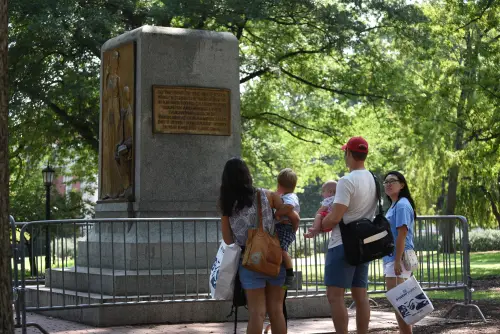
Unveiled in 1913, Silent Sam honored UNC students who fought for the Confederacy. The statue’s backstory made it clear that its purpose wasn’t just remembrance — it was intimidation. At its dedication, a speaker proudly declared that the statue represented white supremacy and the “defense of the Anglo-Saxon race.” It wasn’t subtle, and it wasn’t accidental.
Still, generations of students were told it was simply a war memorial. Its silent gaze over campus masked a loud message: history belongs to those who control it. By cloaking racism in respectability, Silent Sam hid its true intent for decades. It took protests and toppled stone to finally make the truth visible.
14. Stone Mountain (Georgia)

At first glance, Stone Mountain looks like a massive work of Southern artistry — the world’s largest bas-relief carving. But it was conceived in the early 20th century by groups aligned with the Ku Klux Klan. The carving of Confederate leaders wasn’t just nostalgia; it was defiance against desegregation. The monument literally etched a racist legacy into the side of a mountain.
For decades, it’s been promoted as a tourist attraction, complete with laser shows and fireworks. But those family-friendly spectacles mask its origins as a shrine to white supremacy. Stone Mountain doesn’t just hide the truth — it tries to outshine it. It’s history rewritten in granite and light.
15. Mount Rushmore (South Dakota)
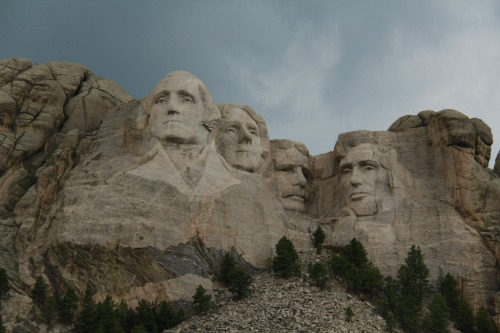
Mount Rushmore is often described as a celebration of democracy and leadership, but its creation tells a more complicated story. The mountain, sacred to the Lakota Sioux, was seized illegally after gold was found in the Black Hills. Carving four presidents into it turned a site of Indigenous reverence into a symbol of conquest. It celebrated freedom on stolen land.
The monument also hides the history of its sculptor, Gutzon Borglum, who once had ties to the Ku Klux Klan. His earlier work on Stone Mountain connected directly to the ideology he later brought to Rushmore. In that sense, it’s not just patriotic — it’s political. The monument’s grandeur distracts from the land and people it displaced.
This post 15 Monuments That Were Built to Hide the Truth, Not Celebrate It was first published on American Charm.


